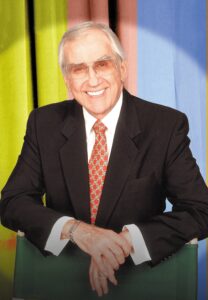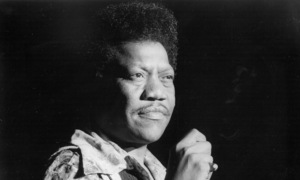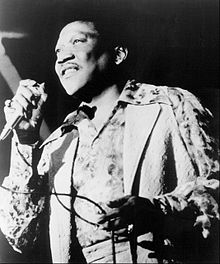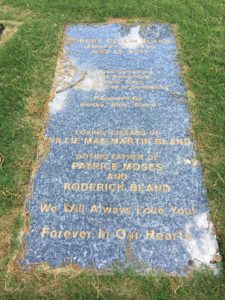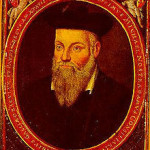 On this day in 1566, French apothecary and reputed seer, author, translator, astrological consultant, Nostradamus died at the age of 62 in Salon-de-Provence, Provence, France. Born Michel de Nostredame on either 14 or 21 December 1503 in Saint-Rémy-de-Provence, Provence, France. Nostradamus published collections of prophecies that have since become famous worldwide. He is best known for his book Les Propheties, the first edition of which appeared in 1555. Since the publication of this book, which has rarely been out of print since his death, Nostradamus has attracted a following that, along with much of the popular press, credits him with predicting many major world events. Most academic sources maintain that the associations made between world events and Nostradamus’s quatrains are largely the result of misinterpretations or mistranslations (sometimes deliberate) or else are so tenuous as to render them useless as evidence of any genuine predictive power. Nevertheless, occasional commentators have successfully used a process of free interpretation and determined ‘twisting’ of his words to predict an apparently imminent event.
On this day in 1566, French apothecary and reputed seer, author, translator, astrological consultant, Nostradamus died at the age of 62 in Salon-de-Provence, Provence, France. Born Michel de Nostredame on either 14 or 21 December 1503 in Saint-Rémy-de-Provence, Provence, France. Nostradamus published collections of prophecies that have since become famous worldwide. He is best known for his book Les Propheties, the first edition of which appeared in 1555. Since the publication of this book, which has rarely been out of print since his death, Nostradamus has attracted a following that, along with much of the popular press, credits him with predicting many major world events. Most academic sources maintain that the associations made between world events and Nostradamus’s quatrains are largely the result of misinterpretations or mistranslations (sometimes deliberate) or else are so tenuous as to render them useless as evidence of any genuine predictive power. Nevertheless, occasional commentators have successfully used a process of free interpretation and determined ‘twisting’ of his words to predict an apparently imminent event.
 The Final Footprint – He was entombed in the local Franciscan chapel in Salon (part of it now incorporated into the restaurant La Brocherie) but re-entombed during the French Revolution in the Collégiale Saint-Laurent, where his tomb remains to this day.
The Final Footprint – He was entombed in the local Franciscan chapel in Salon (part of it now incorporated into the restaurant La Brocherie) but re-entombed during the French Revolution in the Collégiale Saint-Laurent, where his tomb remains to this day.
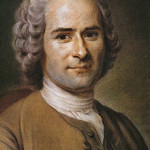 On this day in 1778, Genevan philosopher, writer, and composer Jean-Jacques Rousseau died on the estate of the marquis René Louis de Girardin at Ermenonville (28 miles northeast of Paris), from a hemorrhage, aged 66. Born on 28 June 1712 in Geneva. His political philosophy influenced the French Revolution as well as the overall development of modern political, sociological, and educational thought. Rousseau’s novel Émile: or, On Education is a treatise on the education of the whole person for citizenship. His sentimental novel Julie, or the New Heloise was of importance to the development of pre-romanticism and romanticism in fiction. Rousseau’s autobiographical writings—his Confessions, which initiated the modern autobiography, and his Reveries of a Solitary Walker—exemplified the late 18th-century movement known as the Age of Sensibility, and featured an increased focus on subjectivity and introspection that later characterized modern writing. His Discourse on the Origin of Inequality and his On the Social Contract are cornerstones in modern political and social thought. Rousseau was a successful composer of music, who wrote seven operas as well as music in other forms, and made contributions to music as a theorist. During the period of the French Revolution, Rousseau was the most popular of the philosophes among members of the Jacobin Club.
On this day in 1778, Genevan philosopher, writer, and composer Jean-Jacques Rousseau died on the estate of the marquis René Louis de Girardin at Ermenonville (28 miles northeast of Paris), from a hemorrhage, aged 66. Born on 28 June 1712 in Geneva. His political philosophy influenced the French Revolution as well as the overall development of modern political, sociological, and educational thought. Rousseau’s novel Émile: or, On Education is a treatise on the education of the whole person for citizenship. His sentimental novel Julie, or the New Heloise was of importance to the development of pre-romanticism and romanticism in fiction. Rousseau’s autobiographical writings—his Confessions, which initiated the modern autobiography, and his Reveries of a Solitary Walker—exemplified the late 18th-century movement known as the Age of Sensibility, and featured an increased focus on subjectivity and introspection that later characterized modern writing. His Discourse on the Origin of Inequality and his On the Social Contract are cornerstones in modern political and social thought. Rousseau was a successful composer of music, who wrote seven operas as well as music in other forms, and made contributions to music as a theorist. During the period of the French Revolution, Rousseau was the most popular of the philosophes among members of the Jacobin Club.
 The Final Footprint – Rousseau was initially buried at Ermenonville on the Ile des Peupliers, which became a place of pilgrimage for his many admirers. Sixteen years after his death, his remains were moved to the Panthéon in Paris in 1794, where they are located directly across from those of his contemporary, Voltaire. His tomb, in the shape of a rustic temple, on which, in bas relief an arm reaches out, bearing the torch of liberty, evokes Rousseau’s deep love of nature and of classical antiquity. Other notable Final Footprints at the Panthéon include: Louis Braille, Pierre and Marie Curie, Alexandre Dumas, Victor Hugo, André Malraux, Voltaire and Émile Zola.
The Final Footprint – Rousseau was initially buried at Ermenonville on the Ile des Peupliers, which became a place of pilgrimage for his many admirers. Sixteen years after his death, his remains were moved to the Panthéon in Paris in 1794, where they are located directly across from those of his contemporary, Voltaire. His tomb, in the shape of a rustic temple, on which, in bas relief an arm reaches out, bearing the torch of liberty, evokes Rousseau’s deep love of nature and of classical antiquity. Other notable Final Footprints at the Panthéon include: Louis Braille, Pierre and Marie Curie, Alexandre Dumas, Victor Hugo, André Malraux, Voltaire and Émile Zola.
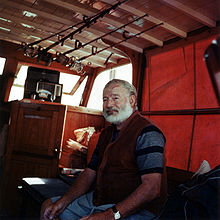 On this day in 1961, author and journalist, recipient of both the Pulitzer and Nobel Prizes, Papa, Ernest Hemingway died from a self inflicted gunshot at his home in Ketchum, Idaho at the age of 61. Born Ernest Miller Hemingway on 21 July 1899 in Oak Park, Illinois. Hemingway lived in Key West and Cuba before moving to Idaho. In my opinion, he is one of the most influential American writers and one of my favorites. His writing style is characterized by short declarative sentences and authentic characters. Hemingway eschewed the elaborate style of 19th century writers in favor of prose that is lean and establishes meaning through dialogue and action and silences. My favorite Hemingway novels inlcude: The Sun Also Rises (1926), which was adapted into a film in 1957 starring Tyrone Power, Ava Gardner, Mel Ferrer and Errol Flynn; A Farewell to Arms (1929) which was adapted into film twice first in 1932 with Gary Cooper and then in 1957 with Rock Hudson; For Whom the Bell Tolls (1940) which was adapted into a film starring Cooper and Ingrid Bergman; and The Old Man and the Sea (1952).
On this day in 1961, author and journalist, recipient of both the Pulitzer and Nobel Prizes, Papa, Ernest Hemingway died from a self inflicted gunshot at his home in Ketchum, Idaho at the age of 61. Born Ernest Miller Hemingway on 21 July 1899 in Oak Park, Illinois. Hemingway lived in Key West and Cuba before moving to Idaho. In my opinion, he is one of the most influential American writers and one of my favorites. His writing style is characterized by short declarative sentences and authentic characters. Hemingway eschewed the elaborate style of 19th century writers in favor of prose that is lean and establishes meaning through dialogue and action and silences. My favorite Hemingway novels inlcude: The Sun Also Rises (1926), which was adapted into a film in 1957 starring Tyrone Power, Ava Gardner, Mel Ferrer and Errol Flynn; A Farewell to Arms (1929) which was adapted into film twice first in 1932 with Gary Cooper and then in 1957 with Rock Hudson; For Whom the Bell Tolls (1940) which was adapted into a film starring Cooper and Ingrid Bergman; and The Old Man and the Sea (1952).
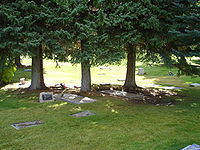 The Final Footprint – Hemingway is interred in Ketchum Cemetery in Ketchum. His grave is marked by a full granite ledger marker.
The Final Footprint – Hemingway is interred in Ketchum Cemetery in Ketchum. His grave is marked by a full granite ledger marker.
| Betty Grable | |
|---|---|
On this day in 1973, actress, pin-up girl, dancer, and singer Betty Grable died from lung cancer in Los Angeles at the age of 56. Born Elizabeth Ruth Grable on December 18, 1916 in St. Louis, Missouri. Her 42 films during the 1930s and 1940s set a record of 12 consecutive years in the top 10 of box office stars.
Grable married former child actor Jackie Coogan in 1937. He was under considerable stress from a lawsuit against his parents over his childhood earnings, and the couple divorced in 1939. In 1943, she married trumpeter Harry James.
Their marriage, which lasted for 22 years, was rife with alcoholism and infidelity before they divorced in 1965. Grable entered into a relationship with dancer Bob Remick, several years her junior, with whom she remained until she died in 1973.
The Final Footprint
Her funeral was held on 4 July. “I Had the Craziest Dream”, the ballad from Springtime in the Rockies, was played on the church organ. She was entombed at Inglewood Park Cemetery in Inglewood, California. Other notable Final Footprints at Inglewood Park include; Ray Charles, Curt Flood, Ella Fitzgerald, Robert Kardashian (father of Kim, Kourtney and Khloé), Billy Preston, and T-Bone Walker.
Grable has a star on the Hollywood Walk of Fame at 6525 Hollywood Boulevard. She also has a star on the St. Louis Walk of Fame. Her iconic pin-up image was recently named one of Time ‘s 100 Most Influential Photographs of All Time.
#RIP #OTD in 1977 novelist (Lolita; Pale Fire; Speak, Memory), poet, translator, and entomologist, Vladimir Nabokov died in Montreux, Switzerland, aged 78. His remains were cremated and buried at Clarens cemetery in Montreux
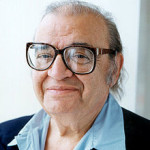 On this day in 1991, Italian American author and screenwriter, Mario Puzo died of heart failure at his home on Manor Lane in West Bay Shore, Long Island, New York, at the age of 78. Born Mario Gianluigi Puzo on 15 October 1920 into a poor family from Pietradefusi, Province of Avellino, Campania, Italy, living in the Hell’s Kitchen neighborhood of New York. Perhaps best known for his novels about the Mafia, including The Godfather (1969), which he later co-adapted into a trilogy directed by Francis Ford Coppola. He received the Academy Award for Best Adapted Screenplay for the first film in 1972 and Part II in 1974. Puzo also wrote the original screenplay for the 1978 Superman film. His final novel, The Family, was released posthumously in 2001.
On this day in 1991, Italian American author and screenwriter, Mario Puzo died of heart failure at his home on Manor Lane in West Bay Shore, Long Island, New York, at the age of 78. Born Mario Gianluigi Puzo on 15 October 1920 into a poor family from Pietradefusi, Province of Avellino, Campania, Italy, living in the Hell’s Kitchen neighborhood of New York. Perhaps best known for his novels about the Mafia, including The Godfather (1969), which he later co-adapted into a trilogy directed by Francis Ford Coppola. He received the Academy Award for Best Adapted Screenplay for the first film in 1972 and Part II in 1974. Puzo also wrote the original screenplay for the 1978 Superman film. His final novel, The Family, was released posthumously in 2001.
The Final Footprint – He is interred next to his wife Erika in West Babylon Cemetery in West Babylon, New York. Their graves are marked by a large upright granite marker.
#RIP #OTD in 1991 actress (Days of Wine and Roses, Anatomy of a Murder, Wild River, No Way to Treat a Lady, The Detective, The Omen, The Europeans), singer, Lee Remick died from kidney cancer in Brentwood, Los Angeles aged 55. Cremation
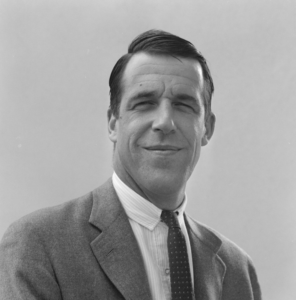 On this day in 1993, US Navy veteran, Harvard University graduate, actor, artist, author Fred Gwynne died of complications from pancreatic cancer in the cigar room at his home in Taneytown, Maryland, at the age of 66. Born Frederick Hubbard Gwynne on July 10, 1926 in New York City. Perhaps best known for his roles in the 1960s sitcoms Car 54, Where Are You? and as Herman Munster in The Munsters, as well as his later roles in The Cotton Club, Pet Sematary (playing Jud Crandall) and My Cousin Vinny.
On this day in 1993, US Navy veteran, Harvard University graduate, actor, artist, author Fred Gwynne died of complications from pancreatic cancer in the cigar room at his home in Taneytown, Maryland, at the age of 66. Born Frederick Hubbard Gwynne on July 10, 1926 in New York City. Perhaps best known for his roles in the 1960s sitcoms Car 54, Where Are You? and as Herman Munster in The Munsters, as well as his later roles in The Cotton Club, Pet Sematary (playing Jud Crandall) and My Cousin Vinny.
In 1952, Gwynne married socialite Jean “Foxy” Reynard, a granddaughter of New York City mayor William Jay Gaynor. In 1988, Gwynne married Deborah Flater.
The Final Footprint
He is interred in an unmarked grave at Sandy Mount United Methodist Church Cemetery in Finksburg, Maryland.
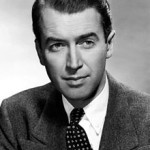 On this day in 1997, United States Army Air Forces veteran, United States Air Force Reserve veteran, film and stage actor, Jimmy Stewart died from a heart attack at his home in Beverly Hills at the age of 89. Born James Maitland Stewart on 20 May 1908 in Indiana, Pennsylvania.
On this day in 1997, United States Army Air Forces veteran, United States Air Force Reserve veteran, film and stage actor, Jimmy Stewart died from a heart attack at his home in Beverly Hills at the age of 89. Born James Maitland Stewart on 20 May 1908 in Indiana, Pennsylvania.
Stewart started acting while studying at Princeton University. After graduating in 1932, he began a career as a stage actor, appearing on Broadway and in summer stock productions. In 1935, he signed a film contract with Metro-Goldwyn-Mayer (MGM). The studio did not see leading man material in Stewart, but after three years of supporting roles and being loaned out to other studios, he had his big breakthrough in Frank Capra’s ensemble comedy You Can’t Take It with You (1938). The following year, Stewart garnered his first of five Academy Award nominations for his portrayal of an idealized and virtuous man who becomes a senator in Capra’s Mr. Smith Goes to Washington (1939). He won his only Academy Award for Best Actor for his work in the screwball comedy The Philadelphia Story (1940), which also starred Katharine Hepburn and Cary Grant.
A licensed amateur pilot, Stewart enlisted as a private in the Army Air Corps as soon as he could after the United States entered the Second World War in 1941. Although still an MGM star, his only public and film appearances from 1941 to 1945 were scheduled by the Air Corps. After fighting in the European theater of war, he had attained the rank of colonel and had received several awards for his service. He remained in the U.S. Air Force Reserve and was promoted to brigadier general in 1959. He retired in 1968, and was awarded the United States Air Force Distinguished Service Medal.
After the war, Stewart had difficulties in adapting to changing Hollywood and even thought about ending his acting career. He became a freelancer, and had his first postwar role as George Bailey in Capra’s It’s a Wonderful Life (1946). Although it earned him an Oscar nomination, the film was not a big success at first. It has increased in popularity in the decades since its release, and is considered a Christmas classic and one of Stewart’s most famous performances. In the 1950s, Stewart experienced a career revival by playing darker, more morally ambiguous characters in Westerns and thrillers. Some of his most important collaborations during this period were with directors Anthony Mann, with whom he made eight films including Winchester ’73 (1950), The Glenn Miller Story (1954) and The Naked Spur (1953), and Alfred Hitchcock, with whom he collaborated on Rope (1948), Rear Window (1954), The Man Who Knew Too Much (1956), and Vertigo (1958). Vertigo was ignored by critics at its time of release, but has since been reevaluated and recognized as an American cinematic masterpiece. His other films in the 1950s included the Broadway adaptation Harvey (1950) and the courtroom drama Anatomy of a Murder (1959), both of which landed him Academy Award nominations.
Stewart’s later Westerns included The Man Who Shot Liberty Valance (1962) and Cheyenne Autumn (1964), both directed by John Ford. He signed a multi-movie deal with 20th Century-Fox in 1962, and appeared in many popular family comedies during the decade.
Stewart remained unmarried until his 40s, and was dubbed “The Great American Bachelor” by the press. In 1949, he married former model Gloria Hatrick McLean. They had twin daughters, and he adopted her two sons from her previous marriage. The marriage lasted until McLean’s death in 1994.
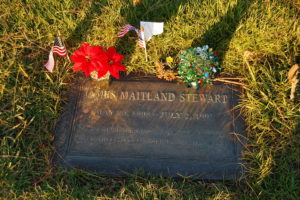 The Final Footprint – His death came one day after the death of one-time co-star Robert Mitchum (The Big Sleep (1978)). Stewart is interred in Forest Lawn Glendale Memorial Park Cemetery, alongside his wife, Gloria, who had died from lung cancer on 16 February 1994. President Bill Clinton commented on Stewart’s death, saying: “America lost a national treasure today. Jimmy Stewart was a great actor, a gentleman and a patriot.” Other notable Final Footprints at Forest Lawn Glendale include; L. Frank Baum, Humphrey Bogart, Lon Chaney, Nat King Cole, Sam Cooke, Dorothy Dandridge, Sammy Davis, Jr., Walt Disney, Errol Flynn, Clark Gable, Jean Harlow, Michael Jackson, Carole Lombard, Tom Mix, Casey Stengel, Elizabeth Taylor, and Spencer Tracy.
The Final Footprint – His death came one day after the death of one-time co-star Robert Mitchum (The Big Sleep (1978)). Stewart is interred in Forest Lawn Glendale Memorial Park Cemetery, alongside his wife, Gloria, who had died from lung cancer on 16 February 1994. President Bill Clinton commented on Stewart’s death, saying: “America lost a national treasure today. Jimmy Stewart was a great actor, a gentleman and a patriot.” Other notable Final Footprints at Forest Lawn Glendale include; L. Frank Baum, Humphrey Bogart, Lon Chaney, Nat King Cole, Sam Cooke, Dorothy Dandridge, Sammy Davis, Jr., Walt Disney, Errol Flynn, Clark Gable, Jean Harlow, Michael Jackson, Carole Lombard, Tom Mix, Casey Stengel, Elizabeth Taylor, and Spencer Tracy.
On this day in 2007, operatic soprano Beverly Sills died from lung cancer at the age of 77. Born Belle Miriam Silverman on May 25, 1929 in Crown Heights, Brooklyn, New York City. Although she sang a repertoire from Handel and Mozart to Puccini, Massenet and Verdi, she was known for her performances in coloratura soprano roles in live opera and recordings. Sills was largely associated with the operas of Donizetti, of which she performed and recorded many roles. Her signature roles include the title role in Donizetti’s Lucia di Lammermoor, the title role in Massenet’s Manon, Marie in Donizetti’s La fille du régiment, the three heroines in Offenbach’s Les contes d’Hoffmann, Rosina in Rossini’s The Barber of Seville, Violetta in Verdi’s La traviata, and most notably Elisabetta in Roberto Devereux.
After retiring from singing in 1980, she became the general manager of the New York City Opera. In 1994, she became the chairwoman of Lincoln Center and then, in 2002, of the Metropolitan Opera, stepping down in 2005. Sills lent her celebrity to further her charity work for the prevention and treatment of birth defects.
On November 17, 1956, Sills married journalist Peter Greenough, of the Cleveland, Ohio, newspaper The Plain Dealer and moved to Cleveland.
The Final Footprint
#RIP #OTD in 2016 filmmaker (Thunderbolt and Lightfoot, The Deer Hunter, Heaven’s Gate, The Sicilian) Michael Cimino died in Beverly Hills, aged 77. Final footprint unknown at this time
 On this day in 2016 writer, professor, political activist, Nobel laureate, and Holocaust survivor Elie Wiesel died at his home in Manhattan, aged 87. Born Eliezer Wiesel Hebrew: אֱלִיעֶזֶר וִיזֶל ʾĔlîʿezer Vîzel on September 30, 1928 in Sighet (now Sighetu Marmației), Maramureș, in the Carpathian Mountains in Romania. He authored 57 books, written mostly in French and English, including Night, a work based on his experiences as a Jewish prisoner in the Auschwitz and Buchenwald concentration camps.
On this day in 2016 writer, professor, political activist, Nobel laureate, and Holocaust survivor Elie Wiesel died at his home in Manhattan, aged 87. Born Eliezer Wiesel Hebrew: אֱלִיעֶזֶר וִיזֶל ʾĔlîʿezer Vîzel on September 30, 1928 in Sighet (now Sighetu Marmației), Maramureș, in the Carpathian Mountains in Romania. He authored 57 books, written mostly in French and English, including Night, a work based on his experiences as a Jewish prisoner in the Auschwitz and Buchenwald concentration camps.
He was a professor of the humanities at Boston University, which created the Elie Wiesel Center for Jewish Studies in his honor. He was involved with Jewish causes and human rights causes and helped establish the United States Holocaust Memorial Museum in Washington, D. C. In his political activities, he also campaigned for victims of oppression in places like South Africa, Nicaragua, Kosovo, and Sudan. He publicly condemned the 1915 Armenian Genocide and remained a strong defender of human rights during his lifetime.
Wiesel was awarded the Nobel Peace Prize in 1986. The Norwegian Nobel Committee called him a “messenger to mankind”, stating that through his struggle to come to terms with “his own personal experience of total humiliation and of the utter contempt for humanity shown in Hitler’s death camps”, as well as his “practical work in the cause of peace”, Wiesel has delivered a message “of peace, atonement, and human dignity” to humanity. The Nobel Committee also stressed that Wiesel’s commitment originated in the sufferings of the Jewish people but that he expanded it to embrace all repressed peoples and races. He was a founding board member of the New York Human Rights Foundation and remained active throughout his life.
In 1969 he married Marion Erster Rose, who originally was from Austria and also translated many of his books.
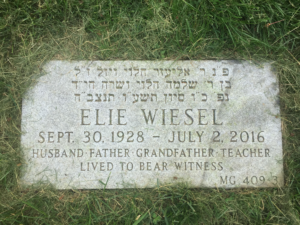
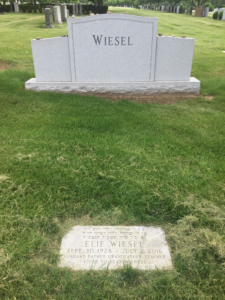 The Final Footprint
The Final Footprint
Wiesel is interred at Sharon Gardens Cemetery in Valhalla, New York
Have you planned yours yet?
Follow TFF on twitter @RIPTFF


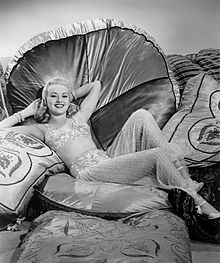





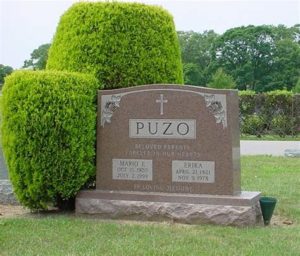



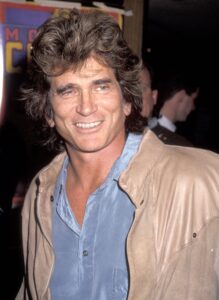
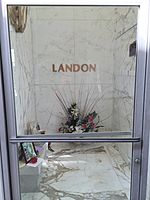 The Final Footprint – Landon was entombed at Hillside Memorial Park Cemetery, in Culver City, California. His crypt plate reads;
The Final Footprint – Landon was entombed at Hillside Memorial Park Cemetery, in Culver City, California. His crypt plate reads;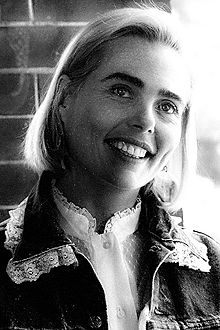 On this day in 1996, granddaughter of Ernest Hemingway, sister of Mariel Hemingway, fashion model and actress, Margaux Hemingway died, one day before the anniversary of her grandfather’s suicide, from an overdose of phenobarbital in her studio apartment in Santa Monica, California at age 42. Born Margot Louise Hemingway in Portland, Oregon on 16 February 1954.
On this day in 1996, granddaughter of Ernest Hemingway, sister of Mariel Hemingway, fashion model and actress, Margaux Hemingway died, one day before the anniversary of her grandfather’s suicide, from an overdose of phenobarbital in her studio apartment in Santa Monica, California at age 42. Born Margot Louise Hemingway in Portland, Oregon on 16 February 1954.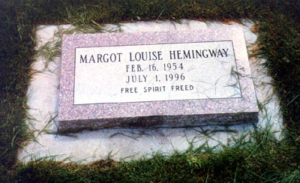
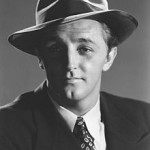 On this day in 1997, actor, author, composer and singer, Robert Mitchum died in Santa Barbara, California, due to complications of lung cancer and emphysema at the age of 79. Born Robert Charles Durman Mitchum on 6 August 1917 in Bridgeport, Connecticut. In my opinion, one of the greatest male American screen legends of all time. Mitchum rose to prominence for his starring roles in several major works of the film noir style, and is considered a forerunner of the anti-heroes prevalent in film during the 1950s and 1960s. My favorite Mitchum film roles include: as Max Cady in Cape Fear (1962), based on the John D. MacDonald book The Executioners with Gregory Peck; as sheriff J. P. Harrah in Howard Hawk‘s El Dorado (1967) with John Wayne and James Caan. Mitchum was married to Dorothy Spence (1940–97 his death).
On this day in 1997, actor, author, composer and singer, Robert Mitchum died in Santa Barbara, California, due to complications of lung cancer and emphysema at the age of 79. Born Robert Charles Durman Mitchum on 6 August 1917 in Bridgeport, Connecticut. In my opinion, one of the greatest male American screen legends of all time. Mitchum rose to prominence for his starring roles in several major works of the film noir style, and is considered a forerunner of the anti-heroes prevalent in film during the 1950s and 1960s. My favorite Mitchum film roles include: as Max Cady in Cape Fear (1962), based on the John D. MacDonald book The Executioners with Gregory Peck; as sheriff J. P. Harrah in Howard Hawk‘s El Dorado (1967) with John Wayne and James Caan. Mitchum was married to Dorothy Spence (1940–97 his death).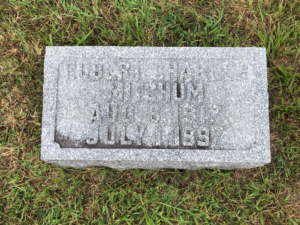
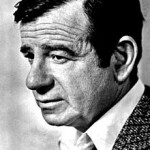 On this day in 2000, actor Walter Matthau died of a heart attack in Santa Monica at the age of 79. Born Walter John Matthow in New York City’s Lower East Side on 1 October 1920. Perhaps best known for his role as Oscar Madison in The Odd Couple and his frequent collaborations with Odd Couple co-star Jack Lemmon, as well as his role as Coach Buttermaker in the 1976 comedy The Bad News Bears. He won an Academy Award for his performance in the 1966 Billy Wilder film The Fortune Cookie. Other notable roles included: as Max Goldman in Grumpy Old Men (1993) with Ann-Margret, Lemmon and Burgess Meredith and in the sequel Grumpier Old Men (1995) with Ann-Margret, Sophia Loren, and Meredith. Matthau married twice; Grace Geraldine Johnson (1948–58; divorced; 2 children) and Carol Grace (1959–2000 his death; one child).
On this day in 2000, actor Walter Matthau died of a heart attack in Santa Monica at the age of 79. Born Walter John Matthow in New York City’s Lower East Side on 1 October 1920. Perhaps best known for his role as Oscar Madison in The Odd Couple and his frequent collaborations with Odd Couple co-star Jack Lemmon, as well as his role as Coach Buttermaker in the 1976 comedy The Bad News Bears. He won an Academy Award for his performance in the 1966 Billy Wilder film The Fortune Cookie. Other notable roles included: as Max Goldman in Grumpy Old Men (1993) with Ann-Margret, Lemmon and Burgess Meredith and in the sequel Grumpier Old Men (1995) with Ann-Margret, Sophia Loren, and Meredith. Matthau married twice; Grace Geraldine Johnson (1948–58; divorced; 2 children) and Carol Grace (1959–2000 his death; one child).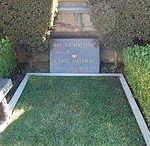 The Final Footprint – interred in the Westwood Village Memorial Park Cemetery (a Dignity Memorial property) in Los Angeles. Less than a year later, Lemmon was buried at the same cemetery. After Matthau’s death, Lemmon as well as other friends and relatives had appeared on Larry King Live in an hour of tribute and remembrance; many of those same people appeared on the show one year later, reminiscing about Lemmon. His wife Carol, died of a brain aneurysm in 2003. Her remains are buried next to Matthau’s. The remains of actor George C. Scott are also buried next to Matthau, in an unmarked grave. Other notable final footprints at Westwood include; Ray Bradbury, Sammy Cahn, Truman Capote, James Coburn, Rodney Dangerfield, Hugh Hefner, Janet Leigh, Farrah Fawcett, Brian Keith, Don Knotts, Burt Lancaster, Peter Lawford, Peggy Lee, Jack Lemmon, Karl Malden (see below), Dean Martin, Marilyn Monroe, Carroll O’Connor, Roy Orbison, George C. Scott, Dorothy Stratten, Natalie Wood, and Frank Zappa.
The Final Footprint – interred in the Westwood Village Memorial Park Cemetery (a Dignity Memorial property) in Los Angeles. Less than a year later, Lemmon was buried at the same cemetery. After Matthau’s death, Lemmon as well as other friends and relatives had appeared on Larry King Live in an hour of tribute and remembrance; many of those same people appeared on the show one year later, reminiscing about Lemmon. His wife Carol, died of a brain aneurysm in 2003. Her remains are buried next to Matthau’s. The remains of actor George C. Scott are also buried next to Matthau, in an unmarked grave. Other notable final footprints at Westwood include; Ray Bradbury, Sammy Cahn, Truman Capote, James Coburn, Rodney Dangerfield, Hugh Hefner, Janet Leigh, Farrah Fawcett, Brian Keith, Don Knotts, Burt Lancaster, Peter Lawford, Peggy Lee, Jack Lemmon, Karl Malden (see below), Dean Martin, Marilyn Monroe, Carroll O’Connor, Roy Orbison, George C. Scott, Dorothy Stratten, Natalie Wood, and Frank Zappa.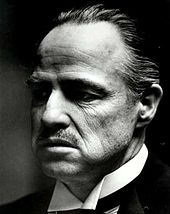 On this day in 2004, Academy Award-winning actor and activist, Marlon Brando died at the Ronald Reagan UCLA Medical Center in Los Angeles of respiratory failure brought on by pulmonary fibrosis at the age of 80. Born Marlon Brando, Jr. on 3 April 1924 in Omaha, Nebraska. In my opinion, one of the greatest and most influential actors in the history of film. Jack Nicholson said of Brando; “When Marlon dies, everybody moves up one.” My favortie Brando roles include: as Stanley Kowalski in Elia Kazan‘s adaptation of Tennessee Williams’ play, A Streetcar Named Desire (1951) with Vivien Leigh, and Karl Malden; as Vito Corleone in Francis Ford Coppola’s adaptation of Mario Puzo’s novel, The Godfather (1972) with Al Pacino, James Caan, Robert Duvall, Diane Keaton, and Talia Shire; as Robert E. Lee Clayton in The Missouri Breaks (1976) with Nicholson; as Colonel Walter E. Kurtz in Coppola’s adaptation of Joseph Conrad’s novel Heart of Darkness, Apocalypse Now (1979) with Martin Sheen, Duvall, and Dennis Hopper. Brando was married three times; Anna Kashfi (1957-1959 divorce), Movita Castaneda (1960-1962 divorce), and Tarita Teriipia (1962-1972 divorce). Brando reportedly had an affair with Marilyn Monroe.
On this day in 2004, Academy Award-winning actor and activist, Marlon Brando died at the Ronald Reagan UCLA Medical Center in Los Angeles of respiratory failure brought on by pulmonary fibrosis at the age of 80. Born Marlon Brando, Jr. on 3 April 1924 in Omaha, Nebraska. In my opinion, one of the greatest and most influential actors in the history of film. Jack Nicholson said of Brando; “When Marlon dies, everybody moves up one.” My favortie Brando roles include: as Stanley Kowalski in Elia Kazan‘s adaptation of Tennessee Williams’ play, A Streetcar Named Desire (1951) with Vivien Leigh, and Karl Malden; as Vito Corleone in Francis Ford Coppola’s adaptation of Mario Puzo’s novel, The Godfather (1972) with Al Pacino, James Caan, Robert Duvall, Diane Keaton, and Talia Shire; as Robert E. Lee Clayton in The Missouri Breaks (1976) with Nicholson; as Colonel Walter E. Kurtz in Coppola’s adaptation of Joseph Conrad’s novel Heart of Darkness, Apocalypse Now (1979) with Martin Sheen, Duvall, and Dennis Hopper. Brando was married three times; Anna Kashfi (1957-1959 divorce), Movita Castaneda (1960-1962 divorce), and Tarita Teriipia (1962-1972 divorce). Brando reportedly had an affair with Marilyn Monroe.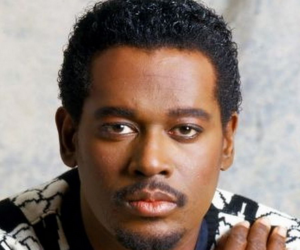
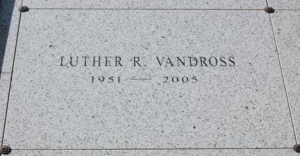
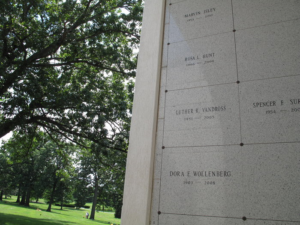
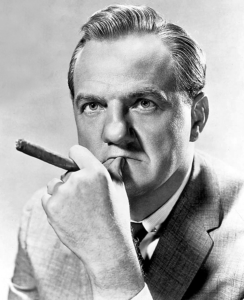

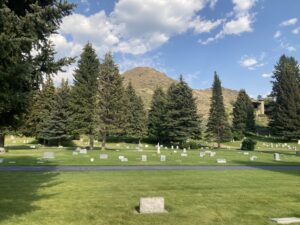
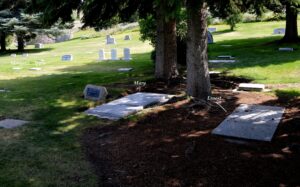

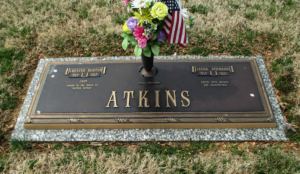
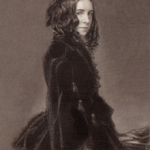
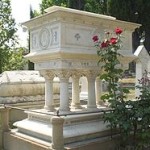
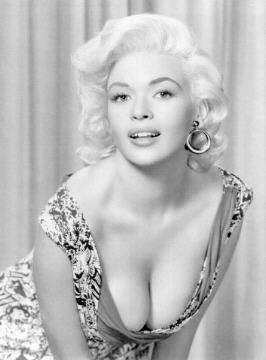
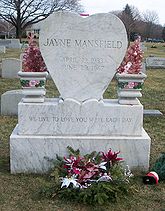 The Final Footprint – Mansfield is interred in Fair View Cemetery in Pen Argyl, Pennsylvania. Her grave is marked by an upright granite marker in the shape of a heart with the inscription; WE LIVE TO LOVE YOU MORE EACH DAY. A memorial cenotaph, showing an incorrect birth year, was erected in the Hollywood Forever Cemetery, Hollywood, California. The cenotaph was placed by The Jayne Mansfield Fan Club. Other notable Final Footprints at Hollywood Forever include; Mel Blanc
The Final Footprint – Mansfield is interred in Fair View Cemetery in Pen Argyl, Pennsylvania. Her grave is marked by an upright granite marker in the shape of a heart with the inscription; WE LIVE TO LOVE YOU MORE EACH DAY. A memorial cenotaph, showing an incorrect birth year, was erected in the Hollywood Forever Cemetery, Hollywood, California. The cenotaph was placed by The Jayne Mansfield Fan Club. Other notable Final Footprints at Hollywood Forever include; Mel Blanc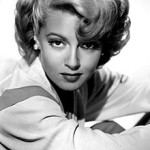




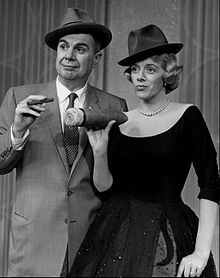
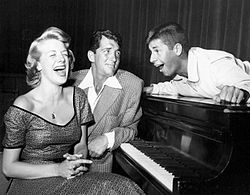
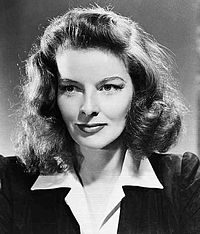
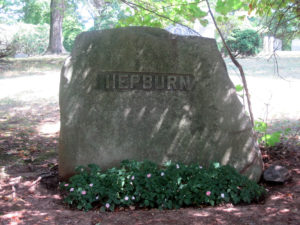
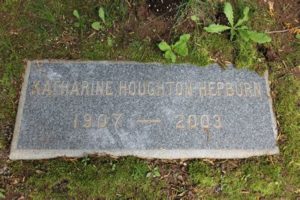
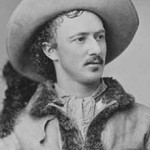 On this day in 1880, frontier scout, actor, and cowboy, Texas Jack Omohundro died of pneumonia in Leadville, Colorado at the age of 33. Born John Baker Omohundro on 26 July 1846 in Pleasure Hill, Virginia. In his early teens, he left home, made his way alone to Texas, and became a cowboy. He participated in early cattle drives, notably on the Chisholm Trail. On one drive across Arkansas to meat-short Tennessee, grateful citizens nicknamed him “Texas Jack.” In 1869, he moved to Cottonwood Springs, Nebraska, near Fort McPherson and became a scout and buffalo hunter. There he met William F. “Buffalo Bill” Cody. Together, they participated in Indian skirmishes and buffalo hunts, acted as guides for notables such as the Earl of Dunraven, and led the highly publicized royal hunt of 1872 with Grand Duke Alexei Alexandrovich of Russia and a group of prominent American military figures. Omohundro and Cody traveled to Chicago in December 1872 to debut in The Scouts of the Prairie, one of the original Wild West shows produced by Ned Buntline. Observers described Omohundro as physically impressive and magnetic in personality. He was the first performer to introduce roping acts to the American stage. During the 1873-74 season, Omohundro and Cody invited their friend James Butler “Wild Bill” Hickok to join them in a new play called Scouts of the Plains. On August 31, 1873, Omohundro married Giuseppina Morlacchi, a dancer and actress from Milan, Italy, who starred with him in the Scouts of the Prairie and other shows.
On this day in 1880, frontier scout, actor, and cowboy, Texas Jack Omohundro died of pneumonia in Leadville, Colorado at the age of 33. Born John Baker Omohundro on 26 July 1846 in Pleasure Hill, Virginia. In his early teens, he left home, made his way alone to Texas, and became a cowboy. He participated in early cattle drives, notably on the Chisholm Trail. On one drive across Arkansas to meat-short Tennessee, grateful citizens nicknamed him “Texas Jack.” In 1869, he moved to Cottonwood Springs, Nebraska, near Fort McPherson and became a scout and buffalo hunter. There he met William F. “Buffalo Bill” Cody. Together, they participated in Indian skirmishes and buffalo hunts, acted as guides for notables such as the Earl of Dunraven, and led the highly publicized royal hunt of 1872 with Grand Duke Alexei Alexandrovich of Russia and a group of prominent American military figures. Omohundro and Cody traveled to Chicago in December 1872 to debut in The Scouts of the Prairie, one of the original Wild West shows produced by Ned Buntline. Observers described Omohundro as physically impressive and magnetic in personality. He was the first performer to introduce roping acts to the American stage. During the 1873-74 season, Omohundro and Cody invited their friend James Butler “Wild Bill” Hickok to join them in a new play called Scouts of the Plains. On August 31, 1873, Omohundro married Giuseppina Morlacchi, a dancer and actress from Milan, Italy, who starred with him in the Scouts of the Prairie and other shows.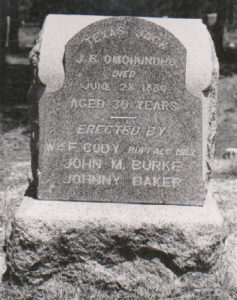
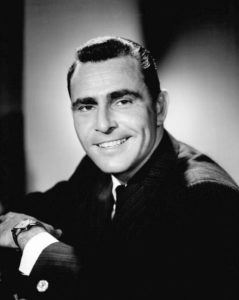 On this day in 1975, United States Army Airborne veteran, screenwriter, novelist, television producer, and narrator Rod Serling died of a heart attack in Rochester, New York at the age of 50. Born Rodman Edward Serling on 25 December 1924 in Syracuse, New York. Perhaps best known for his television series The Twilight Zone and Night Gallery. Serling served as executive producer and head writer for both shows. The Twilight Zone ran on CBS for five years from 1959 to 1964 and featured several young actors who would later become famous including; Ron Howard, Robert Redford, Burt Reynolds, and William Shatner. In my opinion, The Twilight Zone is one of the best shows in the history of television. Serling was married to Carol Serling (1948-1975 his death).
On this day in 1975, United States Army Airborne veteran, screenwriter, novelist, television producer, and narrator Rod Serling died of a heart attack in Rochester, New York at the age of 50. Born Rodman Edward Serling on 25 December 1924 in Syracuse, New York. Perhaps best known for his television series The Twilight Zone and Night Gallery. Serling served as executive producer and head writer for both shows. The Twilight Zone ran on CBS for five years from 1959 to 1964 and featured several young actors who would later become famous including; Ron Howard, Robert Redford, Burt Reynolds, and William Shatner. In my opinion, The Twilight Zone is one of the best shows in the history of television. Serling was married to Carol Serling (1948-1975 his death).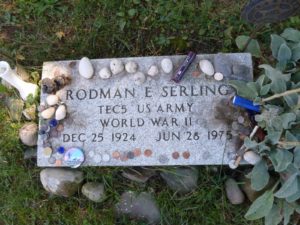 The Final Footprint – Serling is interred in Lake View Cemetery in Interlaken, New York. His grave is marked by an individual engraved granite VA marker. Other notable Final Footprints at Lake View include; 20th President of the United States James A. Garfield; member of The Untouchables, Eliot Ness and John D. Rockefeller.
The Final Footprint – Serling is interred in Lake View Cemetery in Interlaken, New York. His grave is marked by an individual engraved granite VA marker. Other notable Final Footprints at Lake View include; 20th President of the United States James A. Garfield; member of The Untouchables, Eliot Ness and John D. Rockefeller.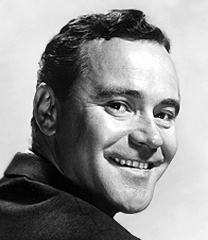 On this day in 2001, United States Navy veteran, Academy Award-winning actor and musician, Jack Lemmon died of colon and bladder cancer in Los Angeles at the age of 76. Born John Uhler Lemmon III on 8 February 1925 in Newton, Massachusetts. Lemmon graduated from Harvard. In my opinion, Lemmon is one the funniest and best film actors. My favorite Lemmon movie roles include; as Jerry “Daphne” in Billy Wilder’s Some Like it Hot (1959) with Marilyn Monroe and Tony Curtis; as Nestor Patou/Lord X in Wilder’s Irma la Douce (1963) with Shirley MacLaine; as Felix Ungar in The Odd Couple (1968) with Walter Mathau and written by Neil Simon; as George Kellerman in The Out-of-Towners (1970), written by Simon; as Jack Godell in The China Syndrome (1979) with Jane Fonda and Michael Douglas; as Shelley Levene in David Mamet’s Glengarry Glenn Ross (1992) with Al Pacino, Alec Baldwin, Ed Harris, Alan Arkin, and Kevin Spacey; as John Gustafson in Grumpy Old Men (1993) with Ann-Margret, Mathau and Burgess Meredith and in the sequel Grumpier Old Men (1995) with Ann-Margret, Sophia Loren, Mathau and Meredith. Lemmon was married twice; Cynthia Stone (1950-1956 divorce) and Felicia Farr (1962-2001 his death).
On this day in 2001, United States Navy veteran, Academy Award-winning actor and musician, Jack Lemmon died of colon and bladder cancer in Los Angeles at the age of 76. Born John Uhler Lemmon III on 8 February 1925 in Newton, Massachusetts. Lemmon graduated from Harvard. In my opinion, Lemmon is one the funniest and best film actors. My favorite Lemmon movie roles include; as Jerry “Daphne” in Billy Wilder’s Some Like it Hot (1959) with Marilyn Monroe and Tony Curtis; as Nestor Patou/Lord X in Wilder’s Irma la Douce (1963) with Shirley MacLaine; as Felix Ungar in The Odd Couple (1968) with Walter Mathau and written by Neil Simon; as George Kellerman in The Out-of-Towners (1970), written by Simon; as Jack Godell in The China Syndrome (1979) with Jane Fonda and Michael Douglas; as Shelley Levene in David Mamet’s Glengarry Glenn Ross (1992) with Al Pacino, Alec Baldwin, Ed Harris, Alan Arkin, and Kevin Spacey; as John Gustafson in Grumpy Old Men (1993) with Ann-Margret, Mathau and Burgess Meredith and in the sequel Grumpier Old Men (1995) with Ann-Margret, Sophia Loren, Mathau and Meredith. Lemmon was married twice; Cynthia Stone (1950-1956 divorce) and Felicia Farr (1962-2001 his death).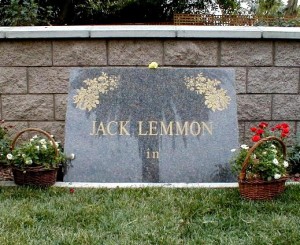 The Final Footprint – Lemmon is interred in a bench estate plot, near his friend Mathau, in Westwood Memorial Park (a
The Final Footprint – Lemmon is interred in a bench estate plot, near his friend Mathau, in Westwood Memorial Park (a 
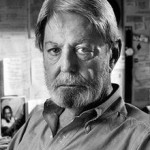
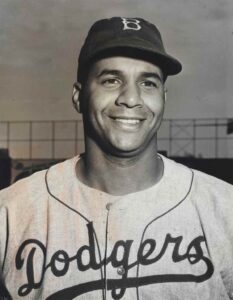


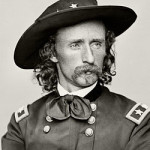
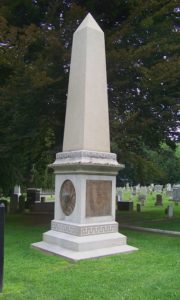
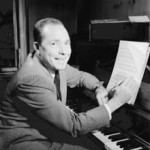
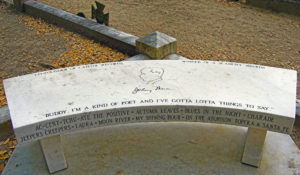
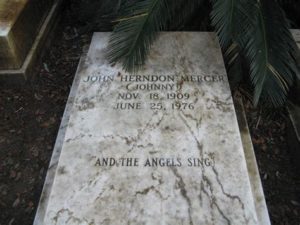 The Final Footprint – Mercer was buried in Savannah’s historic Bonaventure Cemetery. The simple line drawing caricature adorning his memorial bench is in fact a reproduction of a self-portrait. Conrad Aiken is also interred in Bonaventure.
The Final Footprint – Mercer was buried in Savannah’s historic Bonaventure Cemetery. The simple line drawing caricature adorning his memorial bench is in fact a reproduction of a self-portrait. Conrad Aiken is also interred in Bonaventure.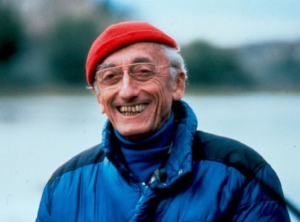

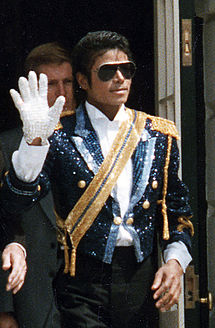

 On this day in 2009, University of Texas at Austin attendee, actress and artist, Farrah Fawcett died from anal cancer in the intensive care unit of Saint John’s Health Center in Santa Monica, California, with Ryan O’Neal and Alana Stewart by her side. She was 62. Born Farrah Leni Fawcett on 2 February 1947 in Corpus Christi, Texas. A multiple Golden Globe and Emmy Award nominee, Fawcett rose to international fame when she first appeared as private investigator Jill Munroe in the first season of the television series Charlie’s Angels in 1976. Fawcett later appeared off-Broadway to critical approval and in highly rated and critically acclaimed television movies, in roles often challenging (The Burning Bed; Nazi Hunter: The Beate Klarsfeld Story; Poor Little Rich Girl: The Barbara Hutton Story; Double Exposure: The Story of Margaret Bourke-White) and sometimes unsympathetic (Small Sacrifices). Fawcett was a sex symbol whose iconic poster, released the same year Charlie’s Angels premiered, broke sales records, making her an international pop culture icon. Her hairstyle was emulated by young women in the 1970s and 1980s.
On this day in 2009, University of Texas at Austin attendee, actress and artist, Farrah Fawcett died from anal cancer in the intensive care unit of Saint John’s Health Center in Santa Monica, California, with Ryan O’Neal and Alana Stewart by her side. She was 62. Born Farrah Leni Fawcett on 2 February 1947 in Corpus Christi, Texas. A multiple Golden Globe and Emmy Award nominee, Fawcett rose to international fame when she first appeared as private investigator Jill Munroe in the first season of the television series Charlie’s Angels in 1976. Fawcett later appeared off-Broadway to critical approval and in highly rated and critically acclaimed television movies, in roles often challenging (The Burning Bed; Nazi Hunter: The Beate Klarsfeld Story; Poor Little Rich Girl: The Barbara Hutton Story; Double Exposure: The Story of Margaret Bourke-White) and sometimes unsympathetic (Small Sacrifices). Fawcett was a sex symbol whose iconic poster, released the same year Charlie’s Angels premiered, broke sales records, making her an international pop culture icon. Her hairstyle was emulated by young women in the 1970s and 1980s.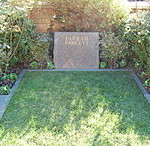
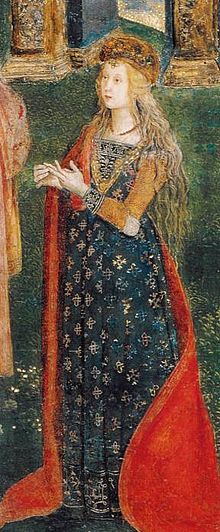
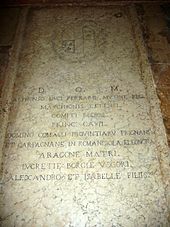
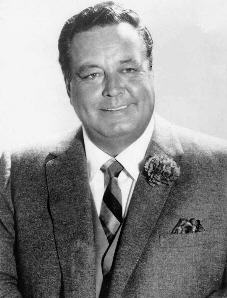 On this day in 1987 comedian, actor and musician Jackie Gleason died at his home in Lauderhill, Florida at the age of 71. Born Herbert Walton Gleason, Jr. on 26 February 1916 in either Bushwick or Bedford-Stuyvesant, Brooklyn. Perhaps best known for his role on television as Ralph Kramden in The Honeymooners and for The Jackie Gleason Show (1952-1970). His most noted film roles were as Minnesota Fats in the drama film The Hustler (1961) starring Paul Newman, and as Buford T. Justice in the Smokey and the Bandit movie series. Gleason married three times; Genevieve Halford (1936-1970 divorce), Beverly McKittrick (1970-1975 divorce) and Marilyn Taylor (1975-1987 his death). His trademark phrases were “And away we go!” and “How sweet it is!”. In my opinion, The Honymooners is, without question, the “Bang, Zoom” funniest show that ever aired on television. And I will stand on Jerry Seinfeld’s coffee table in my cowboy boots and say that. I remember watching The Jackie Gleason Show as a kid. Gleason was hilarious in Smokey and the Bandit.
On this day in 1987 comedian, actor and musician Jackie Gleason died at his home in Lauderhill, Florida at the age of 71. Born Herbert Walton Gleason, Jr. on 26 February 1916 in either Bushwick or Bedford-Stuyvesant, Brooklyn. Perhaps best known for his role on television as Ralph Kramden in The Honeymooners and for The Jackie Gleason Show (1952-1970). His most noted film roles were as Minnesota Fats in the drama film The Hustler (1961) starring Paul Newman, and as Buford T. Justice in the Smokey and the Bandit movie series. Gleason married three times; Genevieve Halford (1936-1970 divorce), Beverly McKittrick (1970-1975 divorce) and Marilyn Taylor (1975-1987 his death). His trademark phrases were “And away we go!” and “How sweet it is!”. In my opinion, The Honymooners is, without question, the “Bang, Zoom” funniest show that ever aired on television. And I will stand on Jerry Seinfeld’s coffee table in my cowboy boots and say that. I remember watching The Jackie Gleason Show as a kid. Gleason was hilarious in Smokey and the Bandit.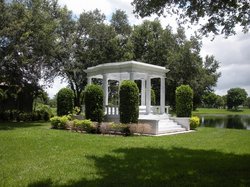
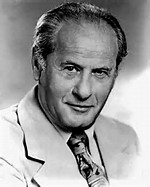 On this day in 2014, actor, graduate of the University of Texas, Eli Wallach died of natural causes at the age of 98 in Manhattan. Born
On this day in 2014, actor, graduate of the University of Texas, Eli Wallach died of natural causes at the age of 98 in Manhattan. Born 